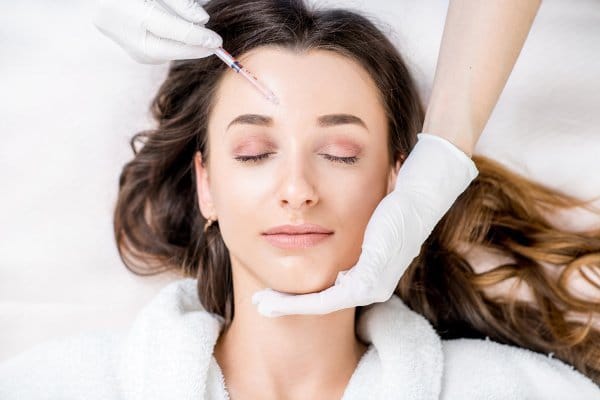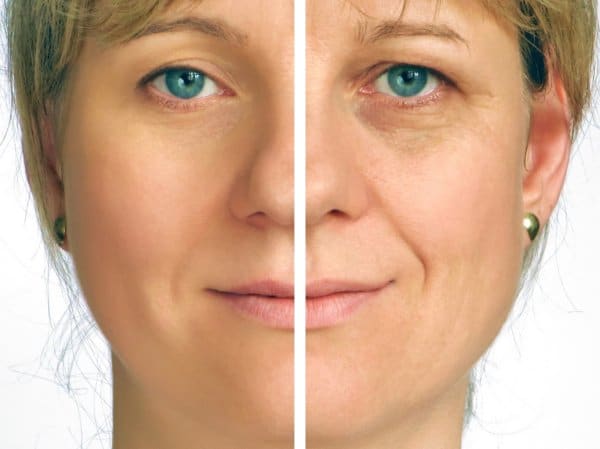Aging skin is a concern for so many because a youthful appearance is highly prized in most cultures. Changes in our appearance may affect self-esteem, interpersonal relationships and even career advancement. Like it or not, exterior appearance influences the way others perceive us which includes assumptions about intelligence and trustworthiness according to recent studies.¹ Ageism is an unfortunate reality that leaves many people feeling isolated and doubting their self worth. These deeply rooted cultural assumptions are difficult, if not impossible, to avoid which explains the popularity of youth enhancing procedures.
A Brief History of Plastic Surgery
According to the American Society of Plastic Surgeons, modern cosmetic procedures were first performed on patients disfigured from traumatic accidents. Evidence for the use of reconstructive skin grafts dates as far back as 800 B.C. In the United States, the rate of surgical cosmetic procedures increased rapidly in the early 20th century as veterans returned from the first world war. The reconstructive techniques originally applied to veterans were quickly adapted for patients without trauma who were experiencing the natural biological aging process or in some way dissatisfied with their outer appearance.
Facelifts and Botox: the Challenges and Drawbacks

The menu of aesthetic procedures expands continually to meet demand. Invasive procedures are available to lift the brows, augment the cheeks, and reshape the nose or chin. Surgical procedures are costly and come with risk of complications such as hematoma and infection. And patients may not always be satisfied with results. A 2010 survey of patients who underwent facelift procedures found that 32% were disappointed in some aspect of the procedure and 24% had problems with incisions or scars.² Less invasive options include botox, chemical peels and laser resurfacing. These procedures may be more affordable, but they are not without side effects.
Botulinum toxin, botox, is a powerful neurotoxin that temporarily paralyzes muscles. Injections around the mouth and eyes can diminish the appearance of fine lines for 3-6 months. The product was approved for cosmetic applications by the FDA in 2002. At the time, researchers believed that small amounts of the toxin would produce only localized effects, but in 2016 researchers at the University of Wisconsin showed the toxin can travel beyond the site of injection.³ The long term side effects of low-dose neurotoxins are still unknown.
There is new market demand for a safe and biological solution for skin rejuvenation for men and women unwilling to go under the knife or submit to toxic injections.
Platelet Rich Plasma for Skin Rejuvenation

Thousands of clinics across the United States offer rejuvenating skin procedures that utilize the regenerative potential of platelet rich plasma (PRP). PRP is an autologous serum prepared from the patient’s own blood. Clinicians draw 10-120ml of blood in the presence of an anticoagulant such as sodium citrate which prevents the activation of platelets prior to injection. The whole blood undergoes differential centrifugation to separate red blood cells from a mixture of white blood cells and the platelet rich plasma, known as the ‘buffy coat’. Secondary centrifugation concentrates the platelets 6-7 times what is found in whole blood. The final preparation can be injected intradermally or applied topically after extensive microneedling as with the ‘Vampire’ facelift.
Evidence to Support the Use of PRP for Skin Rejuvenation
In 2014, researchers in Korea released the results of a study that examined the effect of platelet rich plasma on infraorbital wrinkles and skin tone. This small-scale, prospective trial utilized split-face methods, meaning that only half of each patient’s face was treated and each patient acted as their own control. Twenty women with an average age of 50, were randomized into two groups. Ten patients received a PRP injection on one side and a platelet poor plasma treatment on the opposing side. In the second group, patients received PRP injections in one half of the face and saline injections as a placebo in the other half. Both groups received three treatments sessions at four week intervals, and they were evaluated three months after the last treatment. Outcomes included a self-assessment questionnaire, subjective satisfaction and clinical assessment by a team of three blinded dermatologists. Results showed a significant improvement of wrinkles and skin tone in the PRP treatment group.⁴
How does PRP Rejuvenate Skin?

To understand the healing potential of platelets, let’s start with a review of their physiological function. Platelets travel throughout the bloodstream at levels between 150,000 to 450,000 platelets per microliter of whole blood. Their primary purpose is to clot blood and promote wound closure by releasing bioactive proteins known as growth factors.⁵ Growth factors initiate the healing process by signalling to surrounding cells: “Hey, epithelial cells, we have a wound here! Let’s rebuild these structures: increase differentiation, increase proliferation!”
In the absence of a traumatic wound, growth factors get to work repairing the structure of sun damaged skin. If you aren’t wearing high SPF sunscreen and donning a hat every time you step outside, then ultraviolet rays from the sun are constantly damaging the delicate skin of your face. Additionally, your body produces 1% less collagen every year after your 20th birthday. So even without constant sun exposure, the structures of your skin will slowly break down with time. PRP growth factors repair the damage. For example, platelet derived growth factor regulates collagenase secretion and collagen synthesis. Transforming growth factor regulates endothelial mitogenesis and epidermal growth factor stimulates endothelial chemotaxis.⁶
Platelet rich plasma injections deliver these bioactive healing compounds directly to the site of damage. For men and women hoping to rebuild sun-damaged skin, PRP is a safe and effective option without the unforeseen side effects of toxic or invasive procedures.
- Etcoff NL, Stock S, Haley LE, Vickery SA, House DM (2011) Cosmetics as a Feature of the Extended Human Phenotype: Modulation of the Perception of Biologically Important Facial Signals. PLoS ONE 6(10): e25656.[plos]
- Friel MT, Shaw RE, Trovato MJ, Owsley JQ. The measure of face-lift patient satisfaction: the Owsley Facelift Satisfaction Survey with a long-term follow-up study. Plast Reconstr Surg. 2010;126(1):245-57.[pdf]
- Bomba-warczak E, Vevea JD, Brittain JM, et al. Interneuronal Transfer and Distal Action of Tetanus Toxin and Botulinum Neurotoxins A and D in Central Neurons. Cell Rep. 2016;16(7):1974-87.[ncbi]
- Kang BK, Shin MK, Lee JH, Kim NI. Effects of platelet-rich plasma on wrinkles and skin tone in Asian lower eyelid skin: preliminary results from a prospective, randomised, split-face trial. Eur J Dermatol. 2014;24(1):100-1. [ncbi]
- Williams, Marlene MD. What are Platelets and Why are They Important?. Heart and Vascular Institute, Johns Hopkins Medicine. Accessed 3.13.2018.[hopkinsmedicine]]
- Dhurat R, Sukesh M. Principles and Methods of Preparation of Platelet-Rich Plasma: A Review and Author’s Perspective. Journal of Cutaneous and Aesthetic Surgery. 2014;7(4):189-197. doi:10.4103/0974-2077.150734.[ncbi]

Get an Instant Quote:
*We Typically Call Within 15 Minutes!





